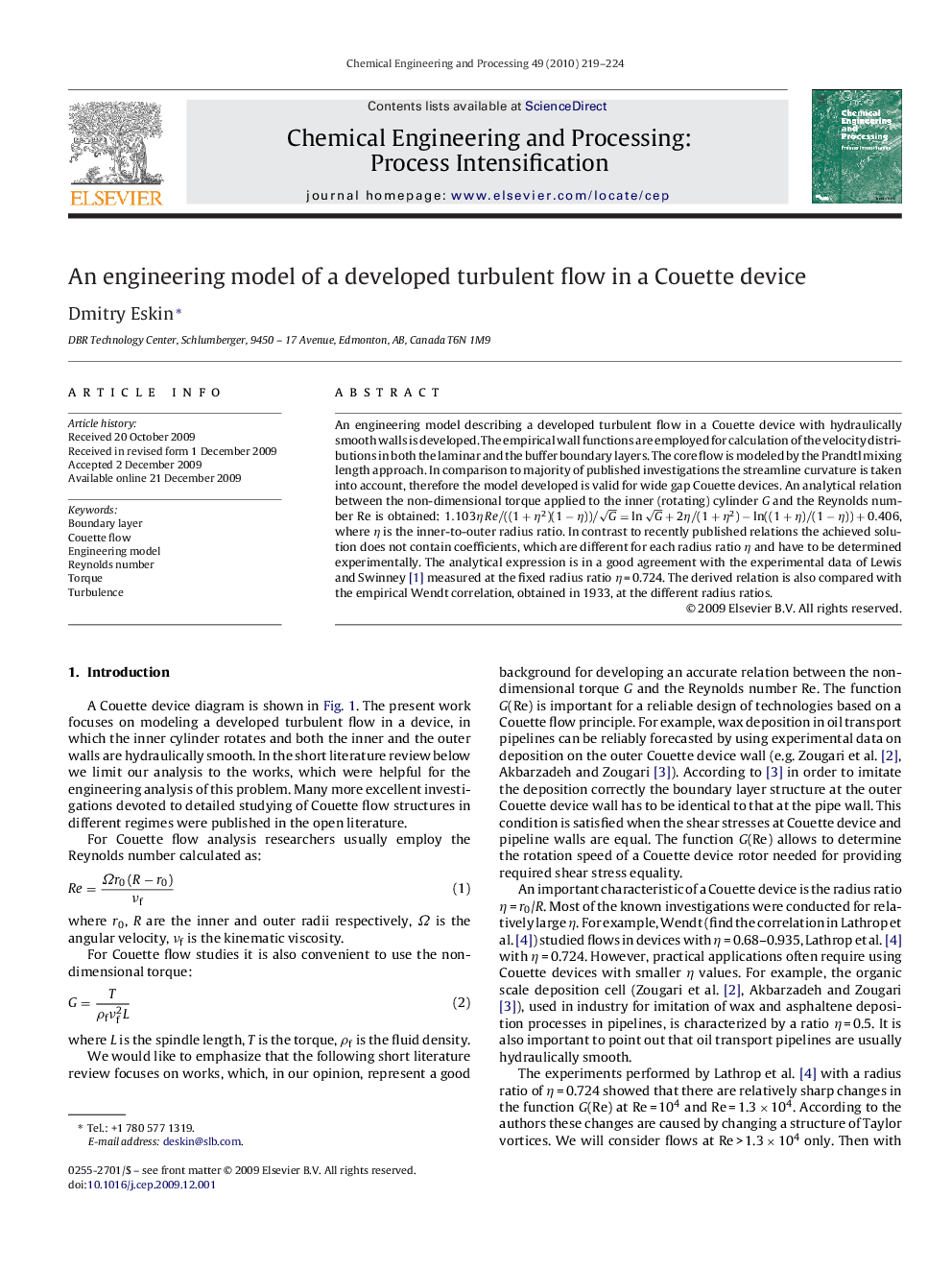| Article ID | Journal | Published Year | Pages | File Type |
|---|---|---|---|---|
| 688453 | Chemical Engineering and Processing: Process Intensification | 2010 | 6 Pages |
An engineering model describing a developed turbulent flow in a Couette device with hydraulically smooth walls is developed. The empirical wall functions are employed for calculation of the velocity distributions in both the laminar and the buffer boundary layers. The core flow is modeled by the Prandtl mixing length approach. In comparison to majority of published investigations the streamline curvature is taken into account, therefore the model developed is valid for wide gap Couette devices. An analytical relation between the non-dimensional torque applied to the inner (rotating) cylinder G and the Reynolds number Re is obtained: 1.103η Re/((1+η2)(1−η))/G=lnG+2η/(1+η2)−ln((1+η)/(1−η))+0.406, where η is the inner-to-outer radius ratio. In contrast to recently published relations the achieved solution does not contain coefficients, which are different for each radius ratio η and have to be determined experimentally. The analytical expression is in a good agreement with the experimental data of Lewis and Swinney [1] measured at the fixed radius ratio η = 0.724. The derived relation is also compared with the empirical Wendt correlation, obtained in 1933, at the different radius ratios.
